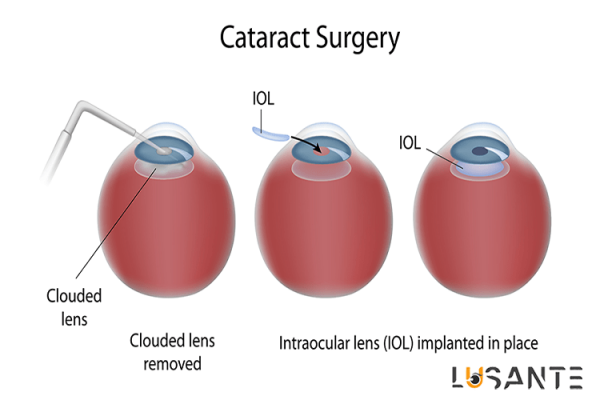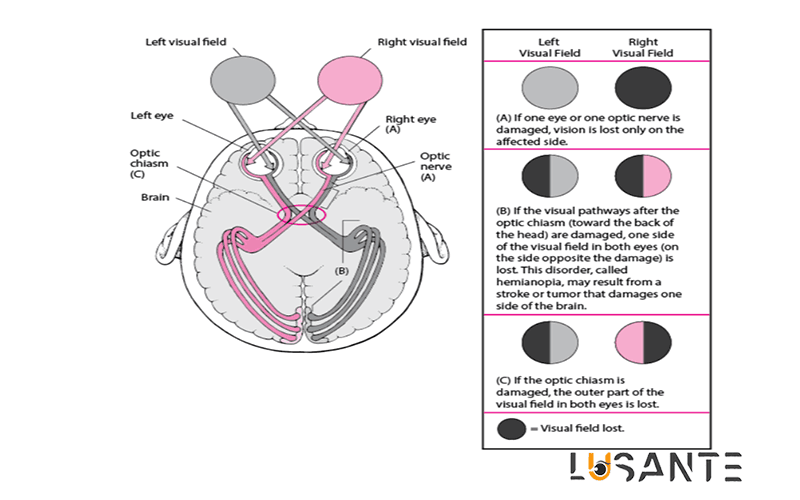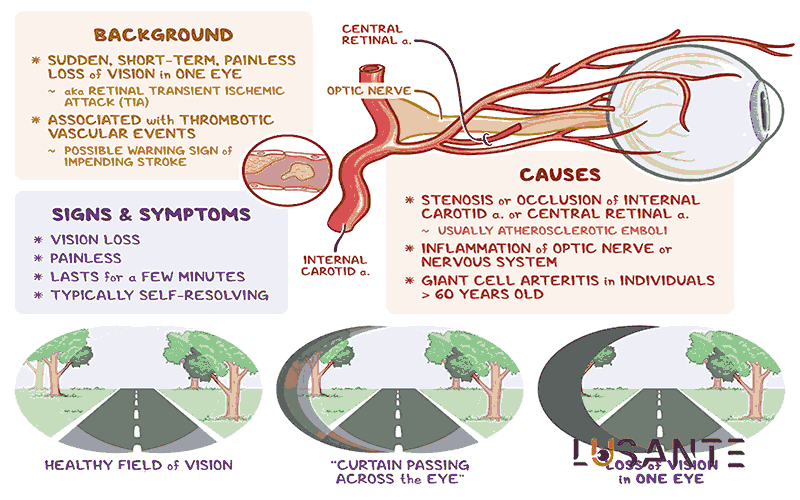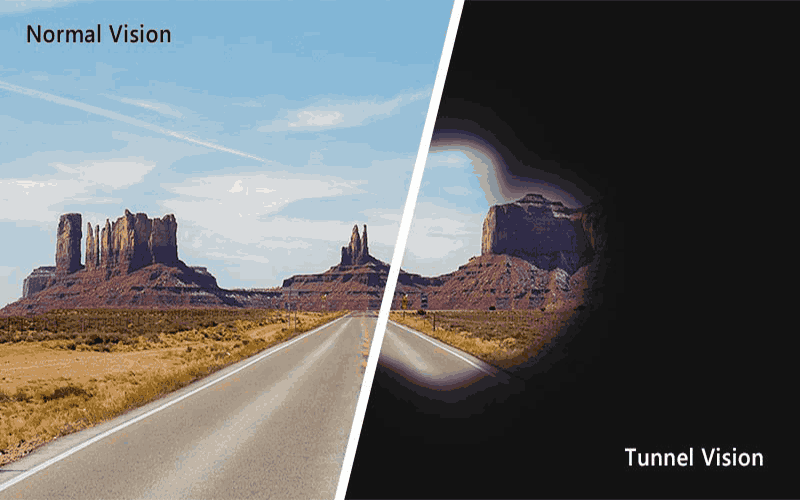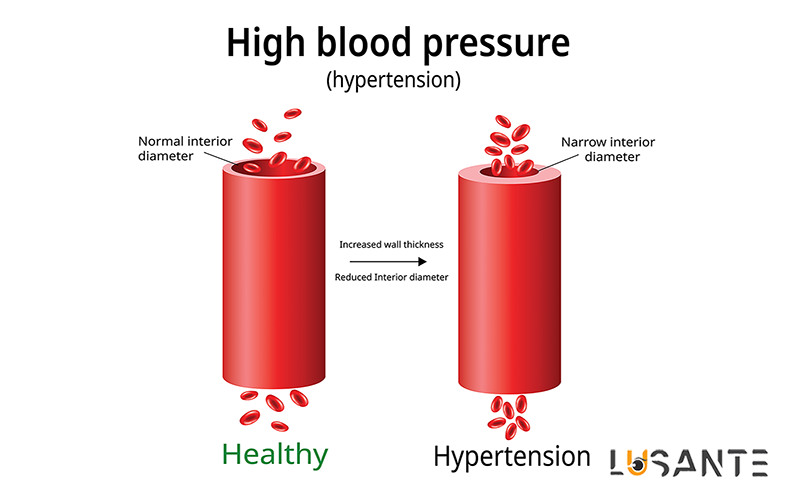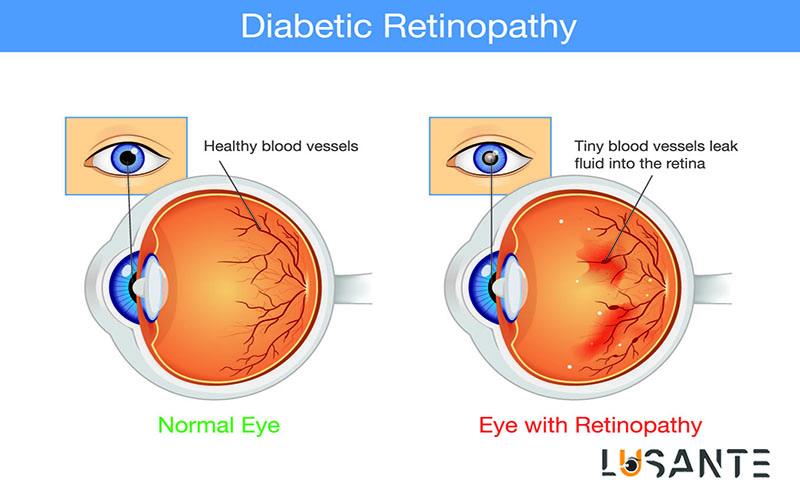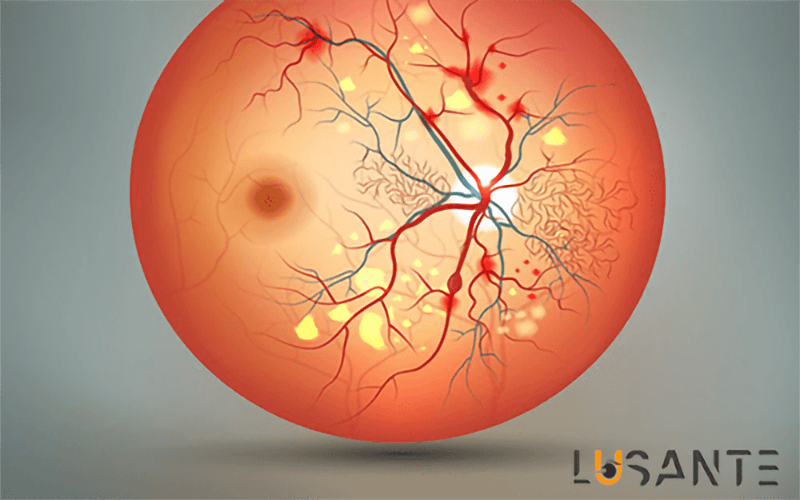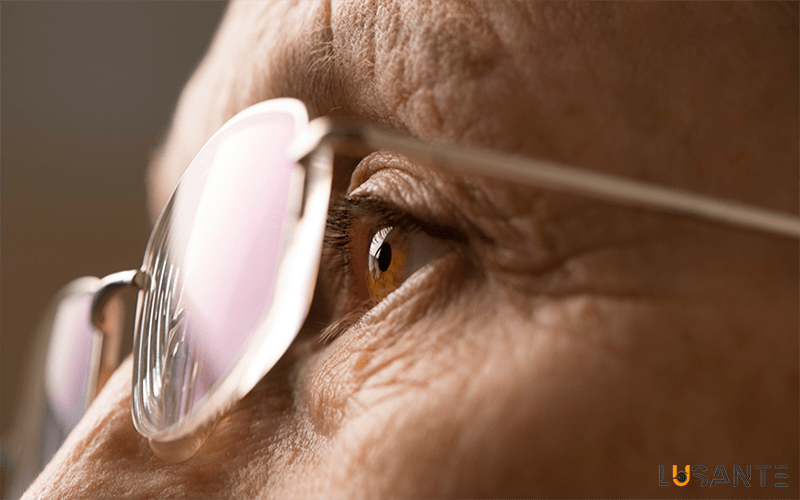How to prevent Cataracts; Symptoms and Treatment

Cataract
How to prevent Cataracts? Cataracts are the leading cause of vision loss in the aging population. The vision loss could be reversed effectively using cataract surgery. The most common type of cataract is age-related cataract. Current literature suggests that some vitamins and antioxidants may prevent cataracts and the development of age-related cataract.
Decreasing the transparency of the natural lens of the eye over time is almost inevitable, and the possibility of its occurrence increases with aging. However, How to prevent Cataracts becomes crucial even though cataracts may also occur among babies and young children. Cataracts often progress gradually with no symptoms in your eyes, but they grow over time and affect your vision.
What Is a Cataract?
The natural lens of the eye is a transparent tissue composed of water and protein. How to prevent Cataracts becomes crucial for maintaining the clarity of this lens. Cataracts are the clouding of the clear lens of the eyes.
Light rays pass through the clear natural lens of the eye to enable us to see. The natural lens is located behind the iris, the colored part of the eye. The natural lens focuses the light on the retina to help us see images clearly.
When cataracts occur, the natural lens of the eye becomes cloudy, thus distorting the light passing through the eye and leading to blurred or dim vision. How to prevent Cataracts is an essential consideration to maintain the clarity of the lens and prevent vision impairment. The vision change depends on the cataract’s location and size.

What causes cataracts?
Most cataracts are caused by oxidative changes in the natural lens of the eye.
Fortunately, in most cases, the vision impairment caused by cataracts is reversible through delicate surgery. It should be noted that cataracts do not spread from one eye to another and do not cause irreversible visual impairment.
How to prevent Cataracts is crucial to maintaining eye health.
Main causes of cataract:
Age-related Cataract
Like other parts of the body, the natural lens of the eye continues to change throughout life and becomes thicker, less transparent, less flexible, and eventually cloudy. How to prevent Cataracts becomes especially relevant as age-related cataract is the most common type, with symptoms usually occurring between the ages of 65 and 74. The prevalence of cataract was also higher in women.
Traumatic Cataract
Serious eye injuries can affect the natural lens of the eye and cause a cataract. How to prevent Cataracts is essential to reduce the risk of traumatic cataracts forming immediately after an injury or many years later.
Radiation Cataract
Some types of radiation, for example, ultraviolet (UV) rays from the sun and radiation treatment for cancer, could result in a cataract. Knowing How to prevent Cataracts is vital, especially in situations where exposure to radiation is a concern.
Pediatric Cataract
Some children are born with cataracts (congenital cataracts) or it may develop later on. Pediatric cataract is rare and usually runs in families. How to prevent Cataracts is an important consideration, and immediate treatment is necessary if pediatric cataracts interfere with your child’s vision.
Secondary Cataract
After cataract surgery, the artificial lens, which was the replacement for the lens of your eye, may become cloudy. This condition is called secondary cataracts. Knowing How to prevent Cataracts is important, and fortunately, they are easy to fix with laser treatment.
How to prevent Cataracts; Some Common Causes of Cataracts:
- Certain diseases such as diabetes
- Long-term use of steroid drugs (corticosteroids)
- alcohol consumption
- Obesity
- High blood pressure
- smoking
- History of eye surgery
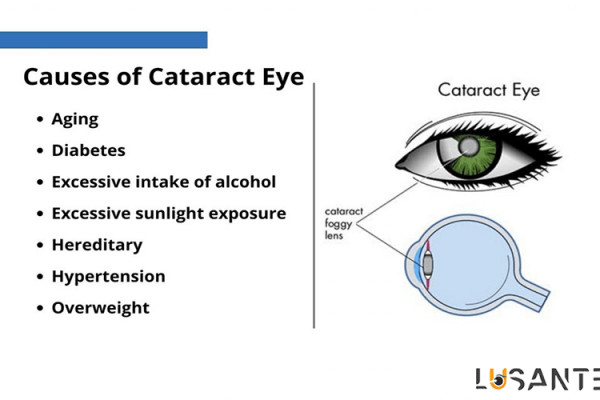
How to prevent cataracts?
Taking vitamin C supplements and consuming foods enriched with them, such as citrus fruits, kiwi, strawberries, lemon, etc., could help prevent cataracts.
Nutrition studies suggest that fruits high in antioxidants such as Bilberry and Grape seed, and vegetables may help prevent certain types of cataracts.
for example, Bilberry is effective in improving and resolving poor circulation (chronic venous insufficiency), retinal problems in people with diabetes or high blood pressure (retinopathy), diabetes, and eye strain.
Grape seed extract helps in wound healing, bone strength, Prevention of skin cancer, etc. It also has a lot of cardiovascular benefits.
Related article: best micronutrients for eye health
In addition, the consumption of herbal supplements containing vitamin C, vitamin E, zinc, copper, etc., has an influence on the occurrence and development of cataract. For Instance, Copper helps improve eye health and prevent the progression of age-related macular degeneration.
The metabolism of copper and zinc are closely related and the coadministration of zinc and copper is recommended. Taking a zinc supplement may depress copper levels, hence copper should also be taken.
Related article: age-related macular degeneration.
Vitamin C (ascorbic acid) is an antioxidant that is highly concentrated in the aqueous humor of the eye and is directly related to dietary intake. High-dose diet of vitamin C may protect normal ocular structures against harmful reactive oxygen radicals. Research shows that vitamin C intakes greater than 300 mg/day are associated with a reduced risk of developing cataracts.
Ingredients that contain vitamin C:
- Bell pepper
- Fruits of the citrus family
- Cabbage
- Broccoli
Vitamin E is a fat-soluble antioxidant that protects the fatty acids in the eye from free radicals or harmful chemicals that damage healthy eye tissue.
Ingredients that contain vitamin E:
- tree nuts
- peanut
- Sunflower seeds
- Vegetable oils
- Green leafy vegetables
Other methods of cataract prevention are described below:
- Quit smoking and alcohol consumption
Smoking damages the proteins and the cell membrane of the lens and increases the risk of cataracts. Excessive consumption of alcohol is also associated with an increased risk of cataract. Quit smoking and drinking alcohol may reduce the prevalence of cataract.
- Medical condition management
Some underlying diseases such as diabetes or parathyroid gland disease (which reduces blood calcium), increase the risk of developing cataracts. It is essential to manage these underlying diseases in order to prevent cataract development. An increased level of blood glucose in diabetes or an increment in the level of galactose in the blood, which is known as the hereditary disease “galactosemia”, is sufficient to develop cataracts.
- Periodic eye examinations
Periodic eye examinations will lead to faster diagnosis of cataracts and more successful treatment. Therefore, making regular appointments with your ophthalmologist is important.
- Avoid ultraviolet (UV) light.
It is possible to avoid ultraviolet (UV) light by using sunglasses. Ultraviolet B (UVB) light emitted from sources such as the sun or welding can severely damage the eye and cause cataracts.
- Having a healthy diet
You choose what to eat. A healthy diet that includes essential vitamins and nutrients, not only reduces the risk of developing cataracts but also keeps your body healthy and strong. Research has shown that eating foods that contain vitamins C and E and lutein and zeaxanthin may reduce the risk of developing cataracts. Additionally, if you already have cataracts, these vitamins and nutrients may slow their progression.

Symptoms of cataract
The followings are the symptoms of cataracts:
- Cloudy vision
One of the most important symptoms of cataract is Clouded, blurred, or dim vision. The clouding areas might be very little at first without any problem, but gradually become denser and involve bigger areas of the lens and make some trouble in driving and recognizing people’s faces.
- Creating halos of light
Another sign of cataract is seeing rings or halos around the light source. This problem mostly occurs at nighttime and is one of the immediate symptoms of cataracts. The cause of these light halos is the diffraction of light passing through the eye.
- Vision problems at night
One of the first symptoms of cataract is worse night vision which refers to your inability to see well at night or in poor light. Night blindness is associated with the inability of the eye to adapt quickly from a well-illuminated to a poor-illuminated place. People who have poor night vision struggle to see while driving at night.
- The constant need to change lenses and glasses
People who need frequent changes to their eyeglasses and contact lenses prescription may have cataracts. The warning frequency for updating lenses or eyeglasses is sooner than two years. Normally, glasses or lenses should be replaced every two years; But updating faster than this period can be a symptom of cataracts or other eye diseases. In this case, it is recommended to see a doctor.
- Double vision
Double vision may be another sign of cataracts. In this case, the person sees two overlapping images of an object, and the brain has a problem combining these two images. Double vision may be an early warning sign of cataract development. When cataracts lead to a cloudy lens, light entering the eye may become scattered causing multiple images.
- Second sight
Sometimes, people who need eyeglasses for reading, find that they do not need them anymore. This phenomenon is called second sight. Second sight is temporary and normally happened in the early stages of cataracts. Cataracs may act like a stronger lens and temporarily improve the close-up vision of a patient.
- Light sensitivity
Exposure to intense light such as sunlight causes sensitivity in normal people, but if the light sensitivity is beyond that, for example, bothersome to look at the light bulb in your house, it can be a symptom of cataracts. During the very early stages of cataract, people may notice an intense sensitivity to light. In some cases, this sensitivity increases and causes pain during exposure to light.
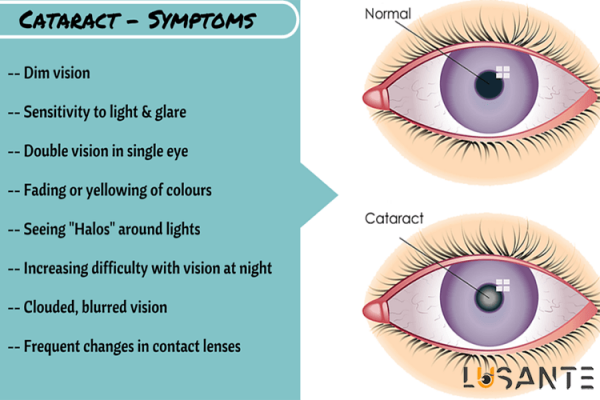
Types of cataracts
Nuclear Cataracts: They affect the center of the lens. Over time, the lens gradually tends to become yellow which intensifies clouding in the center of your vision. As cataracts slowly develop, the lens becomes darker, and recognition of the shades of color becomes more difficult.
Cortical Cataracts: They affect the edges of the lens. It begins with whitish streaks on the outer edge of the lens which gradually extended to the center of the lens. These opacities on the lens of the eye block the light rays to pass through and cause vision disruption.
Posterior Subcapsular Cataracts: They affect the back of the lens. A posterior subcapsular cataract is a small, cloudy area, usually near the back of the lens, right in the path of light. This type of cataract progresses faster than other types.
Congenital Cataracts: They present from birth or shortly afterward. This cataract may be genetic or associated with intrauterine infection or trauma.

Cataract diagnosis
To diagnose this disease, the doctor will review your medical history and symptoms and perform an eye test. In addition, the following tests may be performed:
- Measuring visual acuity
- Examining the appearance of the eyes and examining their movements
- Slit lamp examination
- Examining the reaction of pupils to light
- Tonometry: in this examination, eye pressure is measured. Increased pressure may be a sign of glaucoma.
- Pupil dilation with eye drops allows the ophthalmologist to fully examine all parts of the lens and retina.
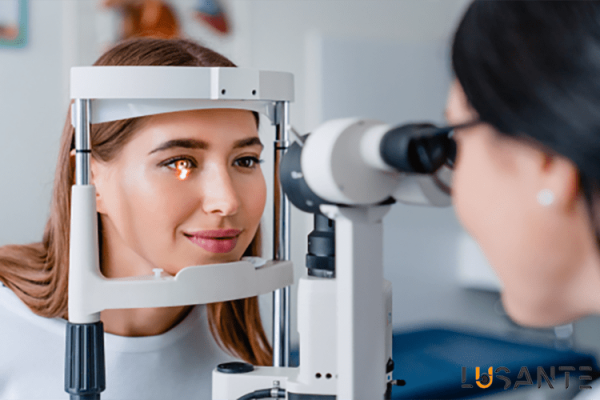
How to prevent Cataracts; Treatment of cataracts
Surgery is the only treatment that has proven to be effective for cataracts. However, it should be noted that some preventive strategies may reduce the risk of developing cataracts. If this disease does not lead to serious problems, surgery is not advised right away, in return wearing eyeglasses or contact lenses may help improve some cataract symptoms such as blurred vision.
During the surgery, the cloudy lens is removed and replaced with an artificial lens. Before the surgery, the ophthalmologist measures the size and shape of your eye in order to determine the right type of intraocular lens for implantation into your eye.
Some post-operative cataract care:
- Using eye drops to prevent infection
- eliminate touching or rubbing your eyes
- avoid vigorous physical activities such as lifting heavy objects
- Ask your ophthalmologist about the appropriate time for activities such as driving or reading, or swimming
Cataract surgery is an outpatient surgery in which the patient does not need to be hospitalized. It takes an hour or less to perform. During the cataract procedure, the doctor anesthetizes the areas around the eyes using local anesthetics to numb these areas and dilate the retina.
Cataract may occur in one or both eyes. However, Simultaneous bilateral cataract surgery is not generally recommended. It is common to perform cataract surgery on the second eye while the first eye is healed completely.
Cataract surgery is a safe procedure with the least side effects. Many patients fully recovered a few days after surgery.
For those who have cloudy vision after cataract surgery, laser treatment is recommended in order to safely, effectively, and painlessly correct it.
